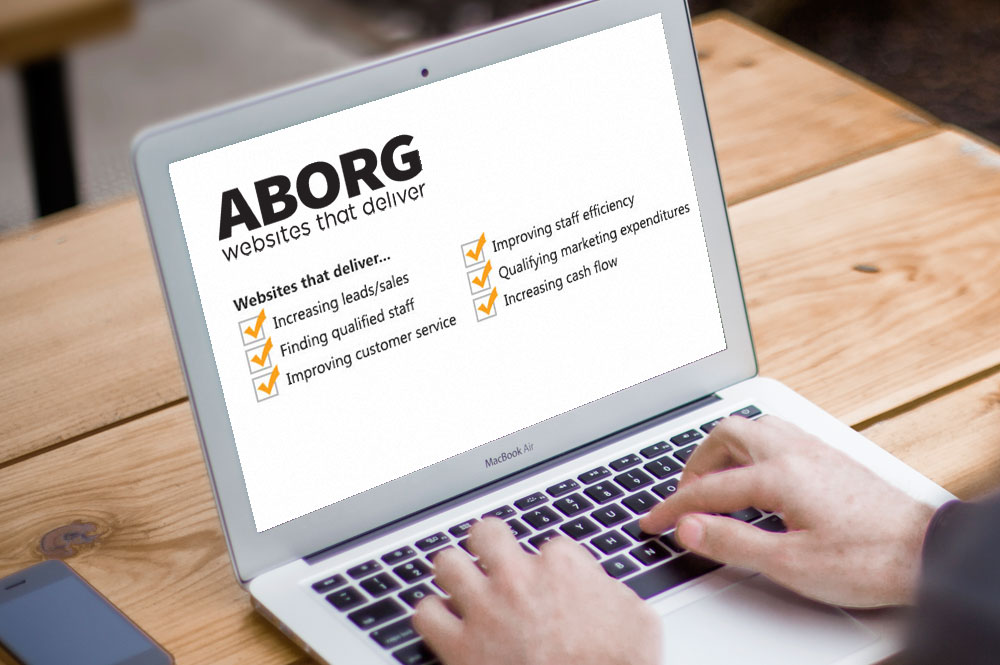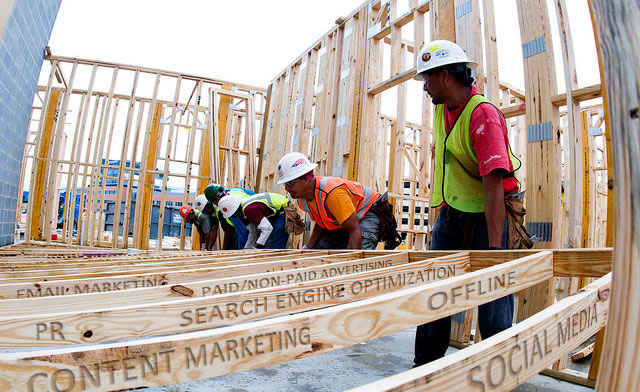Just Because You Build it, Does Not Mean They Will Come

What is a ‘Website That Delivers’?
January 4, 20136 Hot Web Design Trends for 2013
January 20, 2013Contrary to the saying of, “if you build it, they will come”, this does not happen to be the case on the web.

Original photo by Flickr user: USACEpublicaffairs – Adapted under CC 2.0
In our last blog post, What is a Website That Delivers?, we went over some of the benefits a website can bring for your business. Well, unfortunately those benefits don’t come just because you have a website. Unlike a well-situated restaurant which naturally gets a lot of foot traffic resulting in good sales, the web is much different. The internet is vast and full of competition around every corner. Thus, to stand out in the crowd, you need to market your website.
So How Do You Market Your Website?
This becomes a bigger topic than what this single blog post can cover, but there are some fundamental ways to promote and market your website. You will of course need to pick and choose which ones you believe will be the most successful for your business based on your industry and company.
- Paid advertising. This entails everything from Google Adwords to banner ads to directories and more. For any new website, we almost always recommend Google Adwords, as it is a sure-fire way to drive immediate traffic to your site, and when done correctly, bring you concrete results for each dollar you spend. Advertising with search engines like Google or Bing also allow you to take advantage of their multiple advertising options depending on your goal, including Search, Display, Retargeting, Interest Targeting and more.
- Non-paid advertising & listings. There are some very good free tools out there to help you promote your website. For instance, if you are a local business, you should definitely make sure you are listed on Google Places to be found for local searches. Likewise, depending on your business type there may be industry directory or review sites that allow you to add your website. Take advantage of these, especially if they are sites that your customers use to find businesses like you. For example, if you’re a home renovation company, you’ll probably want to list your site on HomeStars and EiEi Homes!
- Search engine optimization (SEO). This is the process of configuring, designing, writing, and promoting your website so that it has an optimal chance of being found on search engine results pages, such as within Google and Bing. SEO can and should be an ongoing process and although it will cost you time, it can be a very sustainable way to generate traffic to your site.
- Social media. I think we all know how important social media is for your business by now. Yet, just like the two points above, it needs to be done correctly. For instance, we never recommend social media to a client for the ‘sake of being on social media’. You need to pick and choose what social networks are relevant to you and your customers and focus your efforts on the ones that matter. With solid commitment and the right strategy, the results can be very rewarding. You can also advertise your website through many social networks as well.
- Content marketing. Google especially, is giving more and more of a focus to ‘good content’ on the web, since after all; that’s what its users appreciate most. Investing the time and energy to produce good, unique, and useful content on your website can go a long way in attracting traffic to your site, and also having those visitors stay longer and return more frequently. This is where blogs, white papers, and other content downloads come into the picture.
- Email marketing. This continues to be one of the most cost-effective forms of marketing. Yet, email marketing is not as easy as it may sound to do right – as you need to be careful you don’t break any laws or send emails from your personal account and get blacklisted as spam. But when done properly, it can really help with top-of-mind awareness for your brand and keep a steady flow of visitors to your site.
- Public relations. We all know the power of PR, so if you have or are in someway newsworthy, seeking out PR can give your website a significant boost, sometimes enough so that it results in a new supply of continuous traffic.
- Offline. Yes, offline! To take full advantage of your website you need to fully adopt it within your organization. This means adding your URL to your offline marketing materials, including business cards, flyers, signs, etc, and encouraging people to visit your site!
The core of marketing is to do as much as you can with the resources you have. Based on the time and money you have available, choosing an effective mix of the above will help you promote your website and business, driving more traffic and leads. And remember, we’re here to help.




